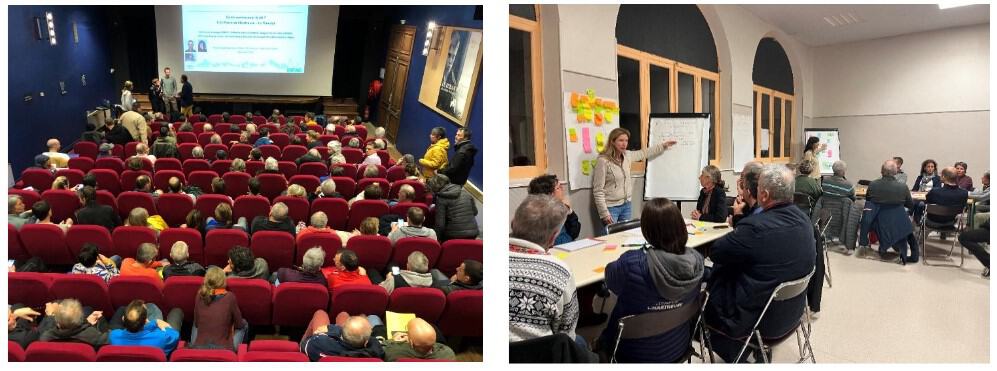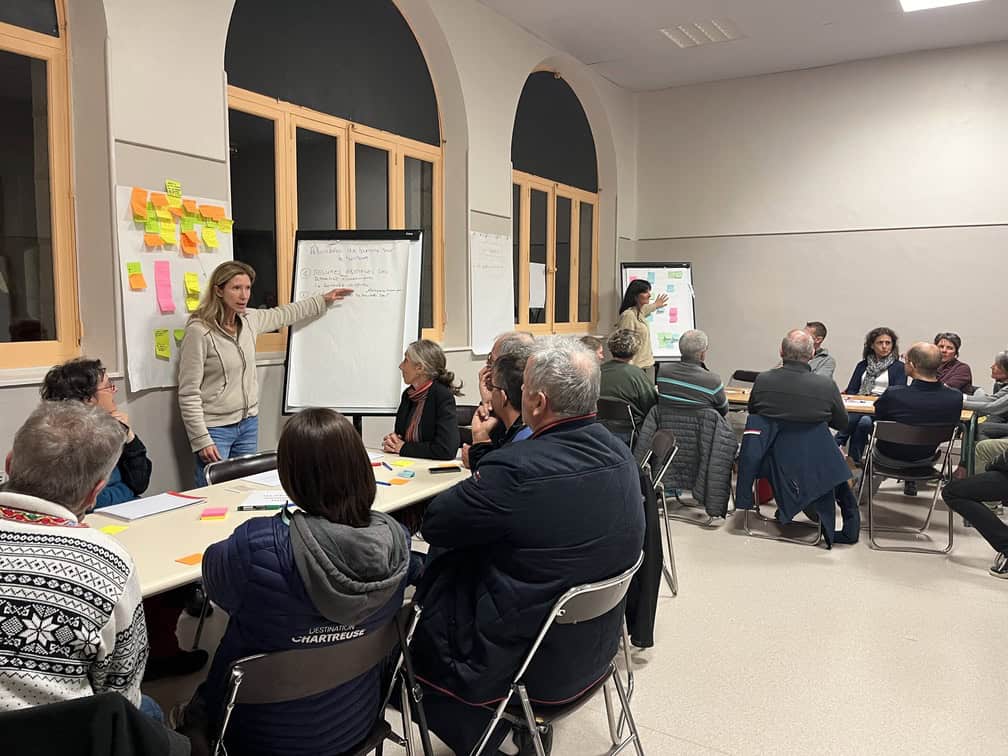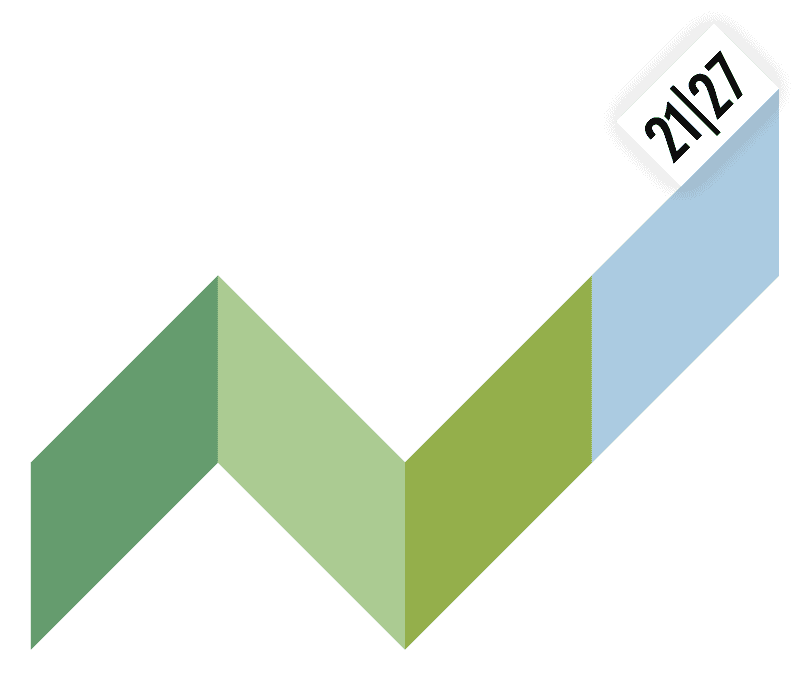Authors: Raffaella Balzarini and Emmanuelle George
The work undertaken with the LL of St Pierre de Chartreuse-Cœur de Chartreuse invites us to highlight the territorial approach to tourism on the scale of this small mountainous massif, close to the Grenoble metropolis, and to address the question of the place held by the European Alpine Space TranStat project.
The LL Cœur de Chartreuse is a 17-town intercommunal grouping created in 2016 which, in addition to its mandatory authorities, is responsible for managing tourism. Since 2016, this intercommunal body has been responsible for managing the St-Pierre-de-Chartreuse/Le Planolet ski area, which is located in the municipalities of Saint Pierre de Chartreuse and Saint Pierre d’Entremont. Since 2016, the intercommunal body has either operated the ski area directly or delegated its management to a private operator, as authorised by the French Mountain Act of 1985.
As for the 2023/2024 winter season, an association called Nouvelles Traces, involving politicians, socio-professionals and local residents, has been given the go-ahead to run the ski resort, but with a limited ski area consisting of 5 ski lifts on the Planolet site and for a one-off season only.
Running the 2023/2024 winter proved to be very difficult, with only 7 days of operation and a clear shortage of snow. However, the low wage costs due to the extensive use of volunteers, together with the low operating costs of the 5 ski lifts, made it possible to limit the economic losses.
Despite this situation, the Nouvelles Traces association is currently assessing the possibility of continuing to operate the ski area next winter. This scenario is part of a wider debate on the future of the ski resort and tourism in general in the Coeur de Chartreuse community.
Indeed, a number of initiatives are underway: those of an associative nature, Nouvelles Traces which, with the support of consultancy agencies, is studying the strategies for adapting the ski area according to different scenarios; those of a political nature of the communes and the inter-communal body which is seeking to establish a coherent regional project; and those of a ‘scientific’ nature, TranStat, which is contributing and developing thematic knowledge of and for the territory.
These various initiatives have been backed up by a range of governance bodies to enable them to reflect together in a coordinated way (Coordination Group, Allies Group), and TranStat is a member of these bodies. TranStat’s active participation in these bodies is in line with the participative and inclusive actions that the Alpine Space programme aims to develop in the region, as part of its approach to support the transition.
TranStat is making an active contribution to this collective dynamic, providing its expertise on the development trajectories of the ski resorts with data analysis or synthesis in seminars and conferences. The presentation at a public meeting in January of the systemic diagnostic of the ski resort and of the wider Chartreuse’s area is a good illustration of this, providing an insight into the way in which the territory is evolving, into its strengths and also its vulnerabilities.
This is helping transform the initial focus on the ski area into a more open and territorially wide-ranging approach to shape the future of the community. To create inspiration, TranStat also brings its know-how in providing foreign and/or French experiences of transitions and related solutions.
In conclusion, the French TranStat teams are clearly identified by the local population, socio-professional actors and public authorities; their expertise is recognised in the process of designing visions and future scenarios.

Public presentation of the territorial diagnostic (30th January 2024) and World café workshop in Saint Pierre de Chartreuse in-depth of the territorial issues (25th March 2024)



